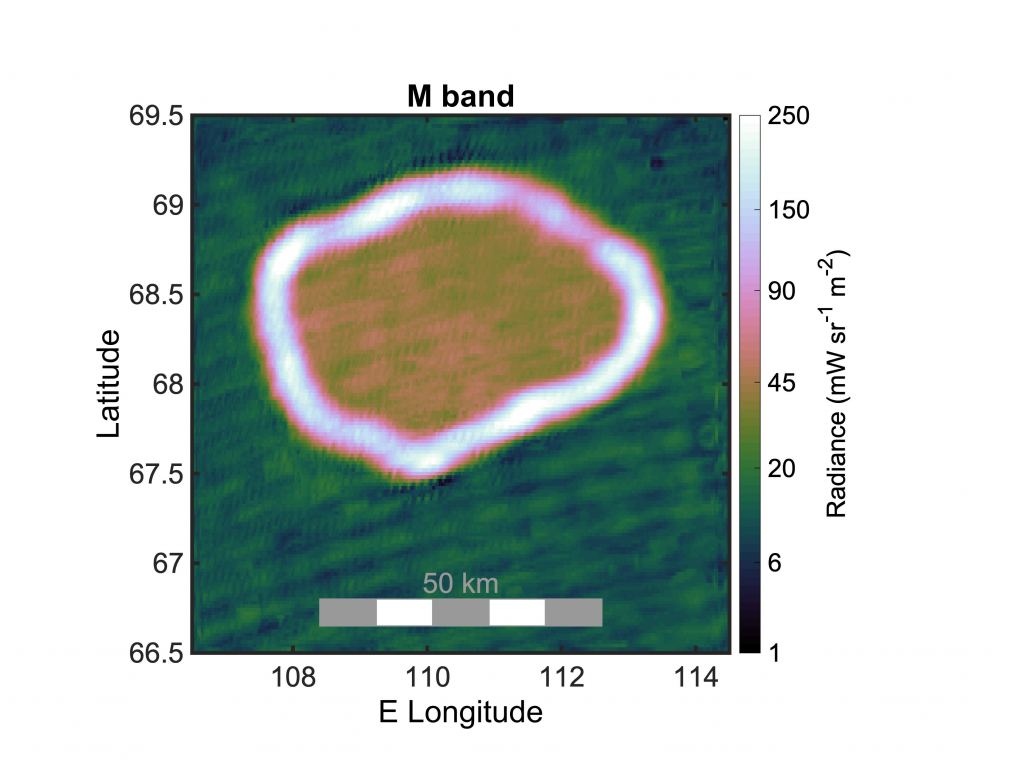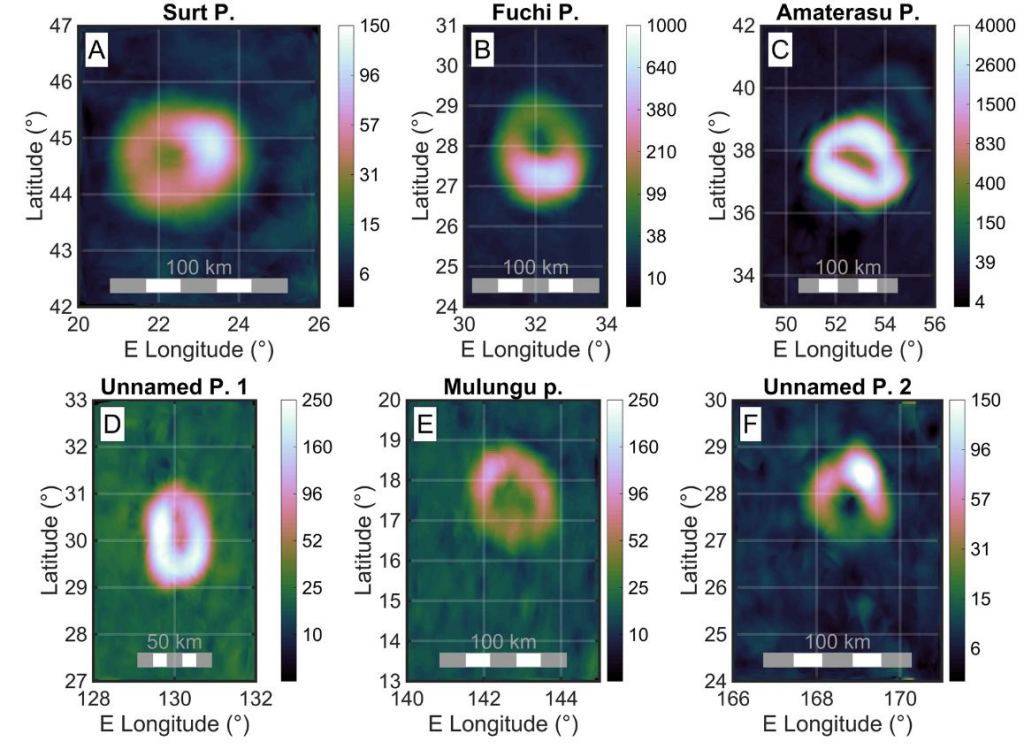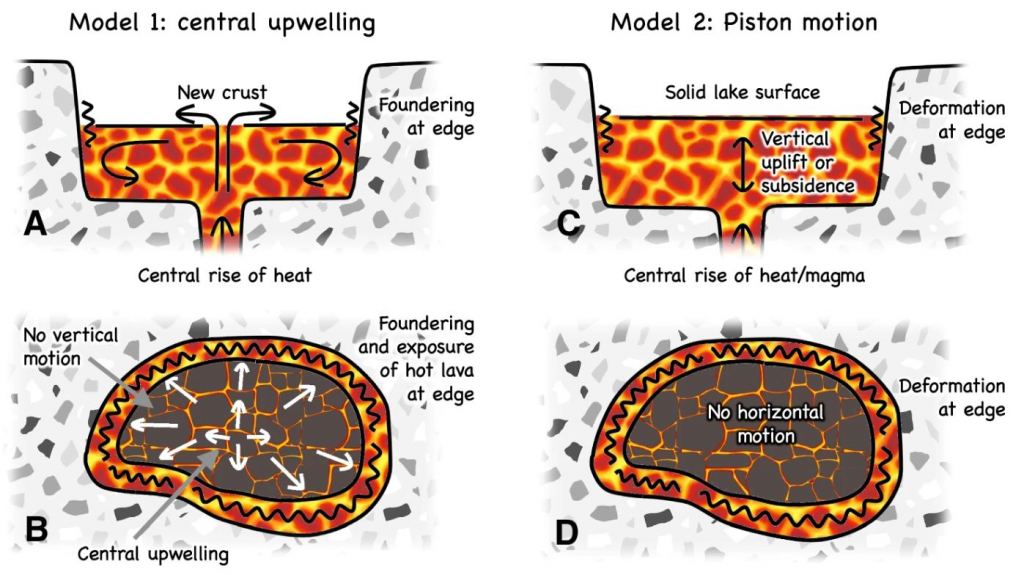As the most volcanic object in the Solar System, Jupiter's moon Io attracts a lot of attention. NASA's Juno spacecraft arrived at the Jovian system in July 2016, and in recent months, it's been paying closer attention to Io.
Though Io's internal workings have been mostly inscrutable, images and data from Juno are starting to provide a fuller picture of the strange moon's volcanic inner life.
Io's extreme volcanic activity stems from tidal heating caused by massive Jupiter and its powerful gravity. Some of the moon's volcanoes spew out plumes of sulphur and sulphur dioxide as high as 500 km (300 miles) above its surface. Sulphur is also ever-present in its lava flows, which colour the moon's surface in various shades of yellow, red, white, green, and black. Some of the lava flows extend up to 500 km (300 miles) along its surface. These features entice scientists to study the moon more thoroughly.
One of Juno's instruments is an imager and spectrometer that operates in the infrared. It's called JIRAM (Jovian Infrared Auroral Mapper.) It was designed to, obviously, map Jupiter's aurorae. But as Juno's orbits have brought it progressively closer to Io, JIRAM is delivering high-quality images and data from the volcanic moon.
"The observations show fascinating new information on Io’s volcanic processes."Scott Bolton, Principal Investigator for Juno, SwRI
In new research in Nature Communications Earth and Environment, a team of scientists present some new insights into the moon and its vigorous volcanic activity. The title is " Hot rings on Io observed by Juno/JIRAM. " The lead author is Alessandro Mura from the National Institute of Astrophysics—Institute of Space Astrophysics and Planetology, Rome, Italy. Italy provided the JIRAM instrument for the Juno mission.
"We are just starting to wade into the JIRAM results from the close flybys of Io in December 2023 and February 2024," said Scott Bolton, principal investigator for Juno at the Southwest Research Institute in San Antonio. "The observations show fascinating new information on Io's volcanic processes. Combining these new results with Juno's longer-term campaign to monitor and map the volcanoes on Io's never-before-seen north and south poles, JIRAM is turning out to be one of the most valuable tools to learn how this tortured world works."
Io has many of what planetary scientists call ' paterae.' Paterae are irregular craters or complex craters with scalloped edges. They're usually broad and shallow, and scientists have wondered if they hold lava lakes. Older observations of Io from NASA's Galileo spacecraft were inconclusive, but new images from Juno and JIRAM have much higher resolution.
In 2023, Juno came to within 13,000 km (8,100 miles) of Io's surface, allowing JIRAM to capture greater detail. These images show more detail for a greater number of paterae, and the features the images reveal suggest that many of the craters have active lava lakes. "This new Juno/JIRAM data suggests that hot rings around paterae are a common phenomenon, and that they are indicative of active lava lakes," the authors write in their paper.
"The high spatial resolution of JIRAM's infrared images, combined with the favorable position of Juno during the flybys, revealed that the whole surface of Io is covered by lava lakes contained in caldera-like features," said Alessandro Mura, the paper's lead author. "In the region of Io's surface in which we have the most complete data, we estimate about 3% of it is covered by one of these molten lava lakes."
Outstanding questions remain about the nature of Io's volcanic activity and what happens underground. These new images help provide answers.
The lava lakes have only a thin ring of exposed lava. There are no lava flows beyond the rim or inside the rim, which indicates a balance between the magma that erupted into the lake and the magma that flowed back underground.
"We now have an idea of what is the most frequent type of volcanism on Io: enormous lakes of lava where magma goes up and down," said Mura. "The lava crust is forced to break against the walls of the lake, forming the typical lava ring seen in Hawaiian lava lakes. The walls are likely hundreds of meters high, which explains why magma is generally not observed spilling out of the paterae and moving across the moon's surface."
The researchers proposed two different geologic models to explain the lava lakes in Io's paterae: one they call a "central upwelling model" and the other a "piston motion" model.
The central upwelling model explains that the insulating crust "spreads radially via convection processes in the lake and then sinks at the edges, exposing lava," the authors explain in their research. Basically, heat rises in the patera's center, pushes outward radially, and hot lava founders at the edge and is exposed.
The problem with that model is the uniformity of the magma crust. JIRAM's images show uniform heat across the magma crust, meaning it would have to be the same thickness. How could it maintain the same thickness while radiating horizontally?
The piston motion is slightly different. In that model, "a simple up-and-down 'piston-type' movement of the entire lake surface may cause disruption of the lava lake crust against the patera walls to reveal hotter material," the authors explain. There's no radiating horizontal motion like the central upwelling; rather, the entire lake moves up and down.
That model has problems, too. "For the piston-type lake model, the consistency between individual patera as well as the uniform brightness around the lake perimeter also poses geological challenges," the authors explain. For all of the ten patera in the study to have hot rings of exposed lava, the vertical motion must be ongoing at all sites. At some sites, JIRAM should've detected changes in the depths of the patera. "No such depth changes at a specific patera have been reported," the authors note, while also writing that the images may lack the temporal and spatial resolution to detect depth changes.
Activity at the rim where the lava is hottest may hold the eventual answer. "The observation of activity at the borders of the lake raises the question of whether some type of thermal or mechanical erosion between the lake surface and the patera walls might be taking place," the authors write. Paterae might grow larger over time, but only by as much as a few hundred meters each year. No changes have been noted between visits by Voyager, Galileo, and Juno. It's still possible, but the data is inconclusive.
The Juno spacecraft may still be able to provide deeper answers to Io's volcanic activity. It's already completed closer flybys of Io, and that data will be available in the future.
"Once the last Juno data are acquired, examining visible images of inactive patera for signs of former lava lake activity would be instructive," the authors write in their conclusion.
 Universe Today
Universe Today



